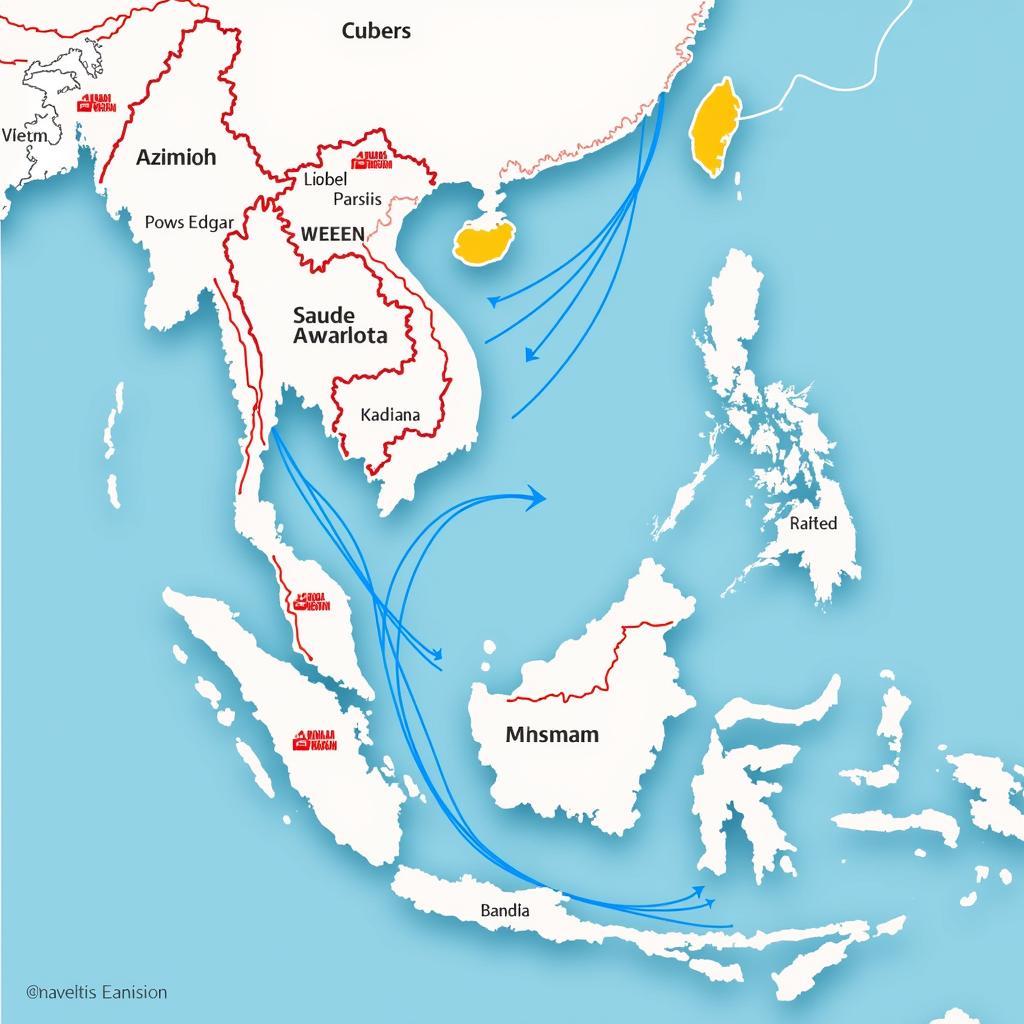Asean Banking is experiencing a period of rapid growth and transformation, driven by a burgeoning middle class, increasing technological adoption, and deepening regional integration. This dynamic landscape presents both opportunities and challenges for banks, businesses, and consumers alike. This article delves into the key trends shaping the ASEAN banking sector, exploring its evolving role in the region’s economic development and its potential to become a global financial powerhouse.
The Digital Revolution in ASEAN Banking
The rise of digital banking is perhaps the most significant trend impacting ASEAN’s financial landscape. The widespread adoption of smartphones and increasing internet penetration have created a fertile ground for fintech innovation, leading to a surge in mobile banking, online payments, and other digital financial services. This shift is not only empowering consumers with greater convenience and accessibility but also driving financial inclusion by reaching previously underserved populations.
What’s driving this digital banking boom? Several factors contribute, including the region’s youthful demographics, the growing popularity of e-commerce, and supportive government policies. These factors, combined with the increasing presence of global fintech players, are accelerating the pace of digital transformation in the ASEAN banking sector.
 Financial inclusion through ASEAN banking initiatives
Financial inclusion through ASEAN banking initiatives
Opportunities and Challenges in the Digital Age
The digital revolution presents significant opportunities for ASEAN banks. It enables them to streamline operations, reduce costs, and expand their reach to new customer segments. However, it also brings challenges, such as the need to invest heavily in new technologies, manage cybersecurity risks, and navigate a rapidly evolving regulatory environment. The ASEAN Banking Council plays a crucial role in navigating these complexities.
ASEAN Banking Integration: Towards a Unified Financial Market
Another key trend shaping the ASEAN banking sector is the push towards greater regional integration. The ASEAN Economic Community (AEC) aims to create a single market and production base, facilitating the free flow of goods, services, investments, and skilled labor. This integration process has significant implications for the banking sector, creating opportunities for cross-border expansion and greater financial connectivity.
Harmonizing Regulations and Fostering Collaboration
Achieving true banking integration requires harmonizing regulations and fostering closer collaboration between ASEAN member states. Initiatives such as the ABIF ASEAN Banking are instrumental in promoting dialogue and cooperation among banks in the region. This collaboration is crucial for developing common standards, addressing regulatory challenges, and promoting cross-border investment.
 Regional Integration in ASEAN Banking
Regional Integration in ASEAN Banking
The Future of ASEAN Banking: A Global Financial Hub?
With its strong economic growth, growing middle class, and increasing technological adoption, ASEAN has the potential to become a major global financial hub. The region’s diverse markets and strategic location offer attractive investment opportunities for international banks. However, realizing this potential requires continued efforts to strengthen regulatory frameworks, enhance financial infrastructure, and promote innovation.
“The ASEAN banking sector is at a critical juncture,” says Dr. Anya Sharma, a leading economist specializing in Southeast Asian finance. “The next few years will be crucial in determining whether the region can capitalize on its immense potential and emerge as a global financial powerhouse.”
Conclusion
ASEAN banking is undergoing a period of dynamic transformation, driven by digital disruption and regional integration. Navigating this evolving landscape requires banks to embrace innovation, adapt to new technologies, and collaborate effectively. The future of ASEAN banking is bright, with the potential to become a major force in the global financial system. The ASEAN banking industry is poised for continued growth.
FAQ
- What are the key drivers of growth in ASEAN banking?
- How is digital technology transforming the banking sector in ASEAN?
- What are the challenges and opportunities of ASEAN banking integration?
- What is the role of fintech in the ASEAN financial landscape?
- How can ASEAN become a global financial hub?
- What is the impact of ASE banking online on traditional banking?
- What is the role of ABIF ASEAN in the development of the ASEAN banking sector?
Need support? Contact us 24/7: Phone: 0369020373, Email: aseanmediadirectory@gmail.com, or visit us at: Thon Ngoc Lien, Hiep Hoa, Bac Giang, Vietnam.
